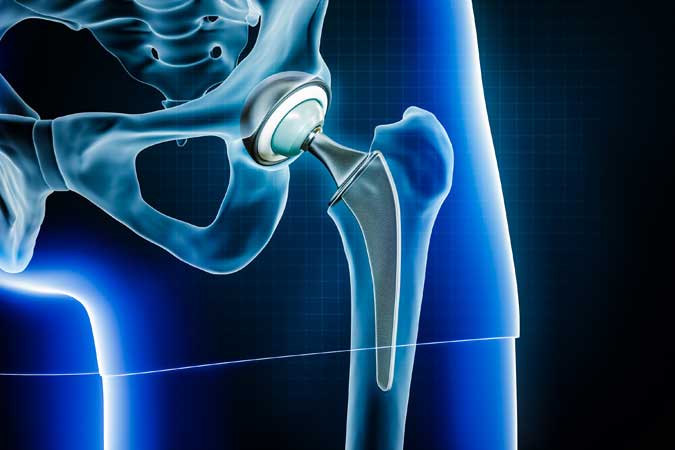Anterior hip replacement for Patients of All Ages
Anterior hip replacement. Prof. Portinaro’s team also performs minimally invasive surgery with anterior approach
With the innovative AMIS (Anterior Mini Invasive Surgery) technique, you can return to your daily life in just a few days. A safe procedure with no blood transfusions, ideal for Jehovah’s Witnesses and heart patients of all ages.
The Benefits of Minimally Invasive Anterior Hip Replacement at a Glance
- Quick procedure: only 35 minutes to replace the joint with a next-generation prosthesis.
- Fast recovery: after just 3 days, you can go home independently, with no need for transfusions or drains.
- Minimally invasive: the technique preserves muscles and tendons, significantly reducing post-operative pain and recovery time.
- Perfect for Jehovah’s Witnesses: due to minimal blood loss, transfusions are not required.
- Ideal for heart patients: the minimally invasive approach is safe even for those with cardiac conditions.
- Bilateral procedure: it’s possible to operate on both hips in a single surgery session.
- Improved aesthetics: the scar is smaller and located in a less visible area.
- Immediate recovery: the day after surgery, patients can begin rehabilitation.
AMIS Technique: The Revolutionary Solution
The AMIS (Anterior Mini Invasive Surgery) technique, selected by Prof. Portinaro and his team, allows access to the hip without cutting muscles or tendons, offering significant functional and aesthetic advantages:
- No muscle damage: reduced risk of complications and shorter hospital stays.
- Minimal blood loss: thanks to the anterior approach, blood loss is minimal.
- Targeted anesthesia: a combination of spinal anesthesia and LIA (Local Infiltration Analgesia) to minimize pain.
Next-Generation Hip Prosthesis: Why Choose This Technique
In recent years, new surgical techniques using cutting-edge materials have enabled next-generation hip replacements.
Prof. Portinaro, along with his team of anesthesiologists, surgeons, nurses, and physical therapists, has adopted this approach of minimally invasive hip prosthesis with anterior access, ensuring a shorter hospital stay, faster recovery, and higher effectiveness, while also preserving muscles and tendons.
This minimally invasive procedure allows for the prosthesis to be inserted without cutting the muscles. As a result, blood loss is significantly reduced, and recovery times are faster.
The AMIS (Anterior Mini Invasive Surgery) technique enables next-generation hip prosthesis and even allows for a “double” surgery: patients can undergo simultaneous operations on both hips or hip and knee.
This is a procedure that would not have been possible with traditional techniques due to the high risks of complications and the need for transfusions. This is why it’s a particularly suitable and appreciated option for Jehovah’s Witnesses.
Anterior hip replacement: How It Works
The anterior access hip prosthesis is a minimally invasive procedure where the incision is made on the front of the hip, unlike traditional approaches that access from the back or side.
Anterior Hip Replacement: Benefits in detail
As mentioned, this approach avoids cutting muscles or tendons. The bone is accessed by gently moving them aside, as the incision is only made in the soft tissues of the joint capsule.
As a result, the scar is less visible.
Because of this, blood loss is reduced, lowering the need for a transfusion.
The procedure can be performed using traditional spinal anesthesia.
All of these factors contribute to faster recovery times. No drains or catheters are needed, allowing for quicker joint mobility.
In most cases, patients begin rehabilitation the day after surgery and are discharged within 3 days.
READ ALSO What is Osteoarthritis of the Hip





